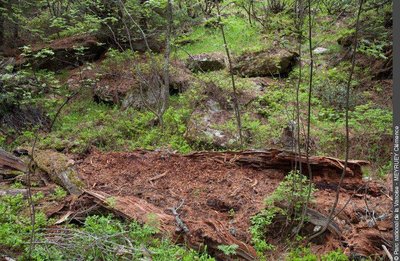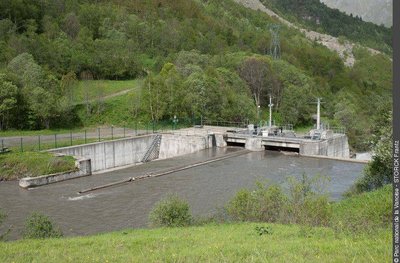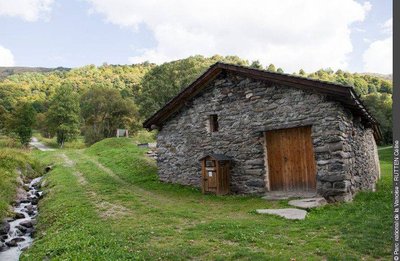
Burdin Wetland Trail
“The wetlands are often overlooked, yet they contain a number of treasures. From the edible plants (try my favourite, Meadowsweet herbal tea) to the amazing animals (the dragonflies that could be taken for helicopters), these places are really worth a visit.” Céline Rutten, Vanoise National Park ranger
Description
From the car park, follow the sign for “sentier zones humides” (wetland trail). It will take you to the St Marcel dam, 30 m from the car park. Then continue on the left in the direction of the 3 interpretive panels in the undergrowth. Reach the Moulin de Burdin. Return via the same route or by the vehicle track.
- Departure : Locality of “Les Iles”, St Marcel
- Arrival : Locality of “Les Iles”, St Marcel
- Towns crossed : LES BELLEVILLE
Forecast
Altimetric profile
Recommandations
The wetlands are fragile environments, do not depart from the paths.
Transport
Rail connection to Moûtiers. Information: www.voyages-sncf.com. Then transport by coach to Ménuires. Information: www.transavoie.com Free shuttle buses to the “Vallée des Belleville” Information: transdev Savoie. Departure for the hike approximately 1km from the village centre.
Access and parking
From Moutiers take the D117 in the direction of the “Vallée des Belleville” (Val Thorens and Les Ménuires). Pass Saint-Jean-de-Belleville and pass the administrative centre of Saint-Martin-de-Belleville, then continue on the D117 for 2km. At the signpost for Saint Marcel turn two times to the right to reach the village centre, continue in the direction of the locality of “Iles” and park next to the dam by the path’s welcome sign.
Parking :
Accessibility
No special disability amenities
- Emergency number :
- 114
5 points of interest

Forêt subnaturelle (forêt en libre évolution) de l'Orgère. Commune de Villarodin Bourget. (PNV AOA) - Clémence MEYRUEY  Fauna
FaunaA dead wood lives on
A dead tree is a habitat within itself, used for breeding and nutrition by larvae and other organisms. These organisms thereby actively participate in the decomposition and natural recycling of organic matter to form the humus and thereby facilitate the growth of new plants.

Glacier de Gébroulaz : séracs et couches de névés (se superposant d'année en année) bien visibles. À l'arr.-pl., l'Aiguille de P - Jacques PERRIER  Geology
GeologyGlaciation
20,000 years ago, immense glaciers covered the whole of the French Alps reaching the Rhone Valley as far as Lyon. These glaciers carved out the mountains and valleys, giving rise to lakes and peat bogs. The Péclet glacier, like other glaciers in the Alps, has heavily diminished in extent over the last 40 years.

Reine-des-prés. (PNV) - BANTIN Louis  Flora
FloraThe roles and functions of the wetlands
Marshes, swamps, bogs...names that remind us of enigmatic and often unrecognised places. Their typical vegetation is formed of plants adapted to the cold and humid climate of our mountains. These wetlands are beneficial as they regulate the flow of water, trap sediment and filter pollutants. The water discharged is therefore of better quality. The willows (Salix) or the Meadowsweet (Filipendula ulmaria), two species inhabiting these wetlands, have interesting medicinal properties. Man extracts their active substances which are used as components in aspirin.

Barrage de Saint Marcel vu depuis la rive droite du Doron de Belleville. (PNV PO) - Frantz Storck  Water
WaterSaint Marcel Dam
The St Marcel dam on the Doron de Belleville was built in 2008. It constitutes a water intake for the network of artificial snow of Ménuires. A fishway was integrated into the structure to allow fish circulation particularly brown trout and rainbow trout in the Doron.

La facade d'entrée du moulin de Burdin. Commune de Les Belleville. (PNV AA) - Céline RUTTEN  Small heritage
Small heritageThe Moulin de Burdin
Renovated in 1996 by the municipality of Les Belleville, the Moulin de Burdin is a witness to the intense agricultural activity that reigned in the valley barely more than 50 years ago. The meadows surrounding the villages were then fields of rye, barley or oats. The amenities of the valley´s ski areas have changed the social and economic life of the valley. Inside the mill, an exhibition explains the functioning of its mechanism and its historical context. Free guided tours are organised during the summer period.
